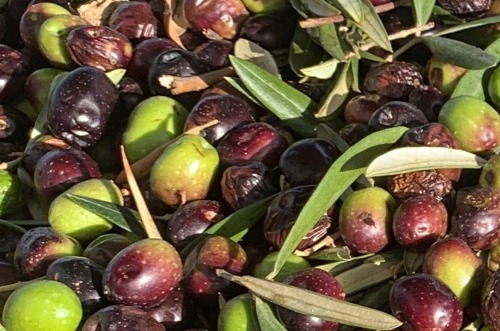
In W42 in the olive and olive oil landscape, the price of Italian olive oil has surged by 37% over the past year. Moreover, 2023's olive season is about to begin, and data from the Italian Farmers Association (Coldiretti) predicts Italian olive oil production to drop by 27% year-on-year (YoY), with the central region facing a substantial 50% decline and the south seeing a 10% reduction compared to their best years. For olive oil processing, Italy produced only 240 thousand metric tons (mt) of olive oil in 2022, and 2023's output is estimated to be around 270 thousand mt, marking a significant decrease of 50 to 60% compared to normal years. This situation could lead to further price increases.
According to the Ministry of Agriculture, Fisheries, and Food of Spain (MAPA), the final stocks of Spanish olive oil at the conclusion of the 2022/23 olive growing season amounted to 247,284 mt. Despite limited Spanish olive oil production in 2022, monthly sales maintained an average rate of 83 thousand mt. For the upcoming 2023/24 season, olive oil production in Spain is projected to reach 765,300 mt, a 15% increase compared to the previous season, which saw a lower harvest of 664 thousand mt. Nevertheless, this production level remains 34% below the average of the last four years.
Meanwhile, in Almería, Spain, olive production for the 2022/23 campaign is expected to be approximately 69 thousand mt, with an estimated yield of 13 thousand mt of olive oil, assuming an average yield of 18.8%. The production is anticipated to be uneven across the province due to high production costs, resulting in some areas experiencing increases while others do not. The high-altitude regions like Almanzora and Rio Nacimiento are expected to see a production boost, while the Tabernas area is unlikely to see such an increase due to severe water scarcity. Almería maintains a stable olive grove area, covering 22 thousand hectares (ha), with the Picual variety being the most prevalent, occupying 4 thousand ha, followed by the Arbequina variety with 2 thousand ha.
In Catalonia, Spain, 2023's olive oil harvest is expected to yield approximately 20 thousand mt. This marks the second consecutive year of a below-average campaign, with production being 38% lower than the 32 thousand mt average. However, there is a 30% increase compared to last year, which had the worst production in two decades at only 15,150 mt of oil. The irregularity is due to many olive groves being rain-fed, resulting in variable outcomes during the drought. Despite being a generally challenging season, areas with irrigation or supplemental irrigation systems could sustain their harvest, and localized rainfall in recent months may boost production in specific municipalities in Montsià compared to the 2022 campaign.
Lastly, the olive harvest season in Manisa's Akhisar district in Turkiye, home to about 14 million olive trees, began with challenging weather conditions. Despite lower yields, the high purchase prices brought optimism to domestic farmers. The harvest, which typically lasts until January, is anticipated to be shorter this year, and the reduction in yield is expected to lead to a continued increase in olive and olive oil prices.




